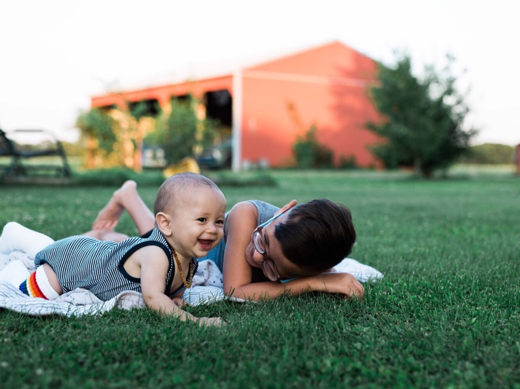
November is Child Safety and Protection Month, which focuses on raising awareness of potential dangers children face, both inside the home and out. American children make an estimated 30 million visits to the emergency room annually, and many of those visits are due to accidental injury. Learning how to recognize and reduce potential dangers to children is key to protecting them.
Choking Hazards
Children chew or suck on just about anything, but it’s important to make sure the things they’re putting in their mouth are not a choking hazard. Anything smaller than a D-size battery is a risk. Keep coins, pen tops, and marbles out of reach of curious hands, and don’t let kids use toys with detachable small parts. If you have older children, teach them to keep their small toys out of reach of their younger siblings—things like doll shoes or Legos.
Some foods are also a risk, so avoid giving kids things like nuts and grapes until they’re old enough. As they grow, teach them to eat slowly and chew their food thoroughly.
Bathroom Safety
Bathrooms offer a multitude of risks. The easiest way to keep kids from getting into trouble is to lock the door, but if that isn’t an option, make sure razors, curling irons, and cleaning supplies are out of sight and reach. Clean up water spills to avoid slippery spots, and invest in a toilet lock. When they’re in the tub, don’t leave any child under 6 unattended, and empty the bath as soon as they’re done with it.
Car Safety
Seat belts are vital when it comes to child safety. Ensure they’re buckled before you go, and for children learning to drive, stress the importance of wearing seat belts and wearing them correctly.
Car seats are equally important for young children. The type of car seat depends on your child’s age and size, but children should always ride in the back seat.
Poison Control
Children of any age can fall victim to accidental poisonings, but it’s most common from ages one to four. Keep cleaning products and chemicals in their original bottles—don’t put them in bowls or jars that children could mistake for food. Store them on a high shelf or locked away, and when using them, put them away as soon as you’re finished.
Additionally, make sure vitamins and medicines are stored in child-proof bottles. When encouraging kids to take their own medicine, don’t be tempted to call it “candy.” Most children will eat sweets like their life depends on it, which isn’t the attitude you want when it comes to potentially-dangerous medicines.
If a child does get into something hazardous, contact Poison Control (1-800-222-1222) and be ready to answer questions about the child’s age, when and what they ingested, and your address.
Accidents happen—you can’t plan for everything, but being educated and prepared are the best ways to handle emergencies. As your children get older, talk to them honestly about potential dangers, and consider developing pediatric first aid and CPR skills.

